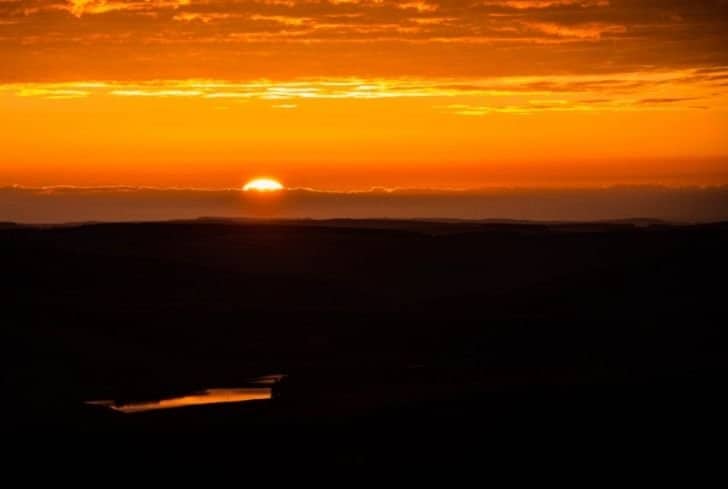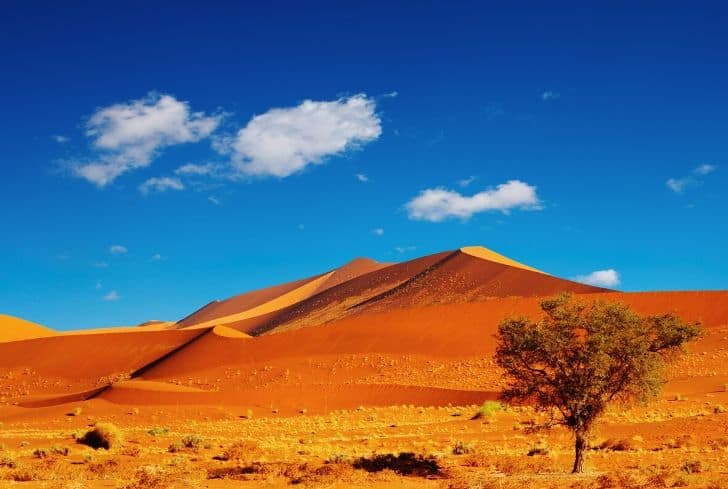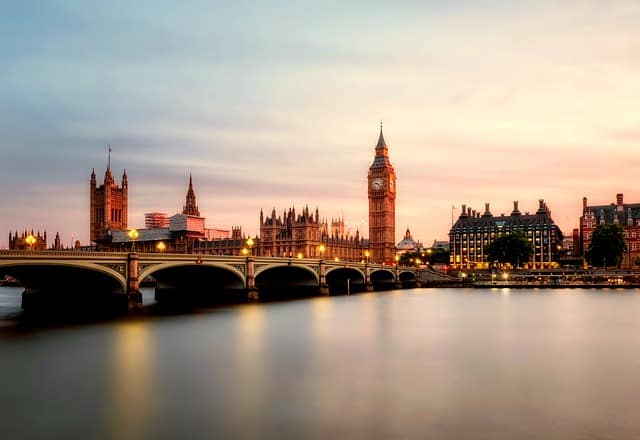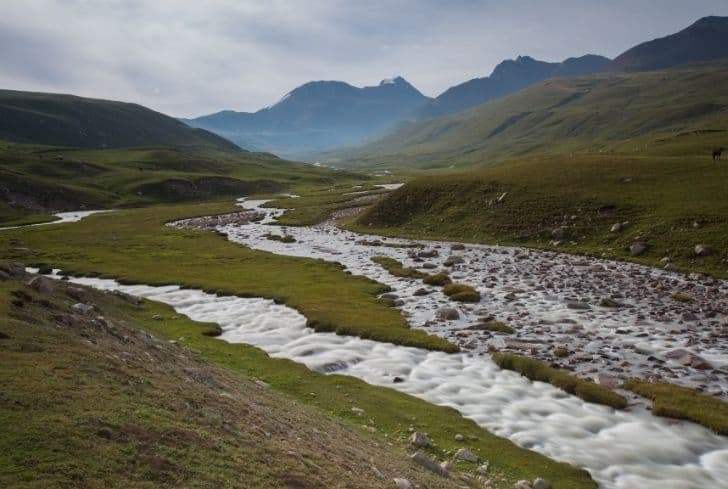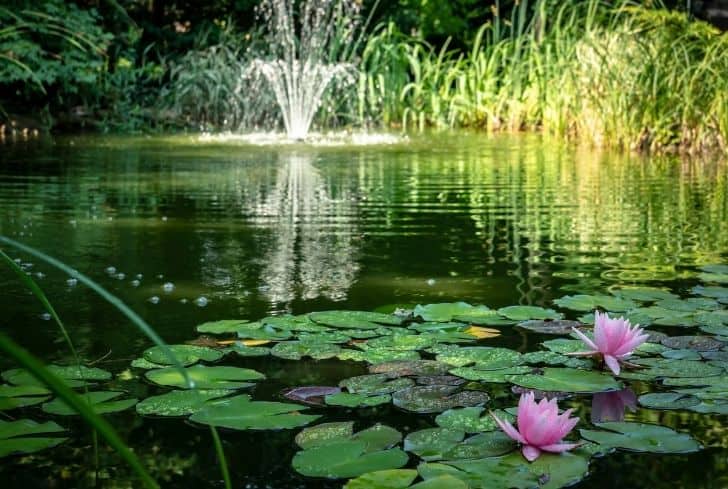20+ Incredible Facts About the North Pole That Might Surprise You
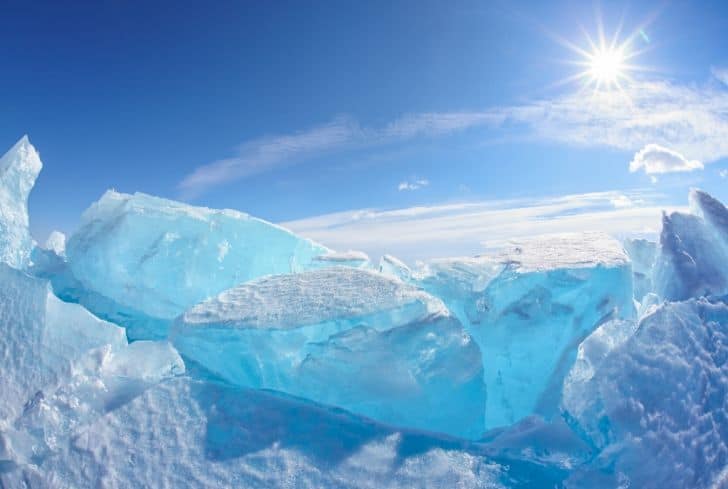
The fact that amazed us right from our childhood days is that the North Pole is a magical place where Santa Claus lives. However, in reality, it’s not. The North Pole is a place in the middle of the Arctic Ocean, almost permanently covered with shifting sea ice. Still, the facts we came to know about the North Pole or the most northern part of our planet is truly amazing. Here are 20+ such incredible facts about the North Pole for you.
20+ Amazing Facts About the North Pole
Fact 1: Which of the north poles are you looking for? There are multiple…
Technically there are two points to be known as the real North Pole. The first one is the north magnetic pole that changes every day, according to what is happening beneath the Earth’s crust. The second is the fixed point that marks the top of the Earth, the north terrestrial pole.
Both the locations sit in the Arctic Ocean. Wait! There is also a third one. It’s called the Geomagnetic North Pole. Over the past century, this Geomagnetic North pole has migrated from Greenland to Canada.
Fact 2: Polar-Orbiting Satellites
NOAA-20 and the Suomi NPP, these two satellites in the Joint Polar Satellite System constellation, circle the Earth from pole-to-pole 14 times a day as the planet rotates on its axis. The Suomi NPP and NOAA-20 satellites collect valuable information about the ocean and atmosphere while flying over the Arctic.
Fact 3: There’s no Land!
The North Pole doesn’t have fixed land. It’s a thick sheet of continuously shifting ice that floats on top of the Arctic Ocean, which is above 4000 meters deep. As per National Geographic, the ice is about 2 or 3 meters thick and measures about a foot above sea-level.
Fact 4: Average Temperatures are not as Cold as you Think
Average temperatures around the North Pole are around -24 degrees Fahrenheit during the winter, while in the holiday season, it may go down to about -40 degrees Fahrenheit. The temperatures in summer tend to hit an average of 32 degrees Fahrenheit.
Fact 5: The North Pole is not the Coldest Place
The North Pole is not the coldest. It’s the second, behind the South Pole located in Antarctica. The temperature at the North Pole can be as high as 32 degrees Fahrenheit (or zero degrees Celsius) and minus 34-degree Celsius on average in winter.
However, the average temperature of South Pole is bone-chilling minus 76 degrees Fahrenheit. The North Pole is only a foot above sea level and absorbs heat from the Arctic Ocean, whereas the South Pole is located 9,000 feet above sea level.
Fact 6: In a year, the Sun rises and sets just Once
The only one sunrise and only one sunset in a year occur in the North Pole due to the tilt of the Earth’s axis. Sun stays continuously above the horizon in the summer during March equinox and below the horizon in winter during September equinox.
Fact 7: Complete Darkness for Six Months
The Earth is on a tilted axis when it revolves around the sun, and it is always below the horizon in winter. Therefore from early October to early March, the winter in the North Pole is forever dark.
Fact 8: It’s Wholly Lit for the other Six Months
From early April to the end of September, the sun is always above the horizon during the summer months. During this period, the North Pole has 24 hours of daylight and a sunny summer always.
Fact 9: It’s Not Part of any Nation
No single country can claim the North Pole region. Over the years, several nations have tried to stake their claim. Canada and Denmark border the North Pole. In 2007, in an expedition called ‘Arktika’, Russia used a mini-submarine for planting a titanium Russian flag on the seafloor underneath. Later, the United Nations dismissed this attempt to claim the pole.
The North Pole is considered as a part of international waters. Countries such as Canada, Denmark (via Greenland), Russia, the United States (via Alaska are allowed to explore hidden oil reserves and other natural resources up to 200 nautical miles from their coastline; however, beyond those miles, they have limited rights.
Fact 10: Untapped Goldmine
Surprisingly, approximately 22% of the world’s natural gas and untapped oil are trapped beneath the ice according to a 2008 study by U.S. Geologic surveys and availing these resources becoming possible these days due to the melting ice. There would be a new cold war-related to this goldmine.
Fact 11: Who lives there?
The conditions may be considered too severe for most humans in the North Pole due to the shifting ice and extreme weather conditions. Native Inuit tribes are living in northern Canada and Alaska. But there is vibrant marine life below, including orcas, Humpback, and Beluga whales, arctic cod, several species of fish, and various kinds of shrimp, tiny crustaceans, and sea anemones.
The Arctic Circle’s outer reaches are ideal to see polar bears in the wild searching for food and also the arctic fox and Svalbard reindeer. But there’s no reindeers or Rudolph of Santa!
Fact 12: No Penguins
One animal you won’t find in the North Pole, and that is the penguin. They live in the South Pole. The reason is the drifting ice that can be unpredictable. However, several species of flying penguin-like birds called auks, guillemots, and puffins can be seen in the Arctic Circle.
Fact 13: The Narwhal
The narwhal is a smaller whale that lives in the waters around the Arctic Circle, and the tusk of each of these whales grows between six and ten feet long. That is why their nickname is “Unicorns of the Sea.” In the 16th century, their “horns” were believed to contain magical curative powers. Queen Elizabeth, I paid 10,000 pounds for one. Yeah, you heard that right!
Fact 14: It’s Challenging to study the Region
Mainly scientists found to travel to the North Pole to study the region. The North Pole is on the ice that is always drifting. Hence it would be difficult for scientists and researchers to set up a permanent station over there. However, they have set up temporary stations in the area that drift along with the floating ice or travel by research ships.
These stations monitor the temperature, ice sheet, currents, weather conditions, marine life, and sea depths. But again, there are no permanent stations as of today.
Fact 15: The First Verified Expedition was in 1909
In 1909, a fellow American by the name of Robert Peary, accompanied by four Eskimos, claimed to be the first to reach the North Pole. His claim wasn’t established until National Geographic conducted extensive studies of Peary’s photographs and concluded his presence within 5 miles of the North Pole. British explorer Tom Avery supported Peary’s claim after he reached the North Pole, successfully following Peary’s route using sled dogs.
Fact 16: There’s a North Pole Marathon!
Since 2002, people around the world take part in the World’s Coolest Marathon on a giant floating sheet of ice to compete in the 26.2-mile marathon race. The ice in this part is sturdy enough to hold human weight as competitors. Over 500 people have completed the competition to date.
Fact 17: A Star marks its Location
North Star glows prominently about 434 light-years above the North Pole. The fixed location of the star has made it a vital navigation marker for centuries.
Fact 18: The Arctic’s Ice is Shrinking
The North Pole is all ice that’s floating on top of the Arctic Ocean. However, over the past four decades, scientists have noticed a steep decline in both the amount and thickness of Arctic sea ice due to global warming. The melting of Arctic ice cap won’t contribute to sea-level rise, but it could influence standard weather patterns and the global climate, according to the National Ocean Service.
Sea ice reflects sunlight and heat back into the atmosphere like a mirror. If that sea ice shrinks or disappears, the ocean will absorb more solar energy. Naturally, the temperatures in the Arctic will rise further because of that additional heat in the sea.
Fact 19: The First Vessel to Cruise Down the North Pole
The U.S. atomic submarine ‘Nautilus’ became the first vessel to sail under the North Pole in 1958. It measured the sea depth at the North Pole at 4,087 m. The ‘Arktika,’ the Soviet nuclear-powered icebreaker, completed its first surface vessel journey to the North Pole in 1977.
Fact 20: Santa Claus Village
There is only one Santa Claus Village that’s located within the Arctic Circle. It is a few miles north of Rovaniemi, a city situated in the frosty Lapland region of Finland. The Arctic Circle’s borderline crosses right through the park and even painted with a white line across it to let guests know their location with respect to the circle.
Other than restaurants and other attractions related to Santa and Christmas, they can mail postcards stamped with a special Santa Claus postmark.
Fact 21: You too can go to the North Pole for Vacation!
Although it’s not exactly a budget destination, Quark Expeditions offers a wide variety of cruising expeditions for ordinary but daring tourists. The Spitsbergen Explorer, a cruise of 11 days around the Norwegian island, and The Ultimate Arctic Adventure, sailing from Russia to the spot 90-degree north representing the North Pole, visit Franz Josef Land moving around the Arctic Ocean.
Along with dedicated guides, you can see the polar bears and walrus hunting in their natural habitat from June to mid-July, flowers, and other arctic flora in bloom from mid-July to mid-August, or you can go from mid-August to September as birds begin to migrate to the South.
Resources:
https://www.today.com/news/10-things-you-never-knew-about-north-pole-1C7657750
https://www.nesdis.noaa.gov/content/five-things-you-didnt-know-about-north-pole


